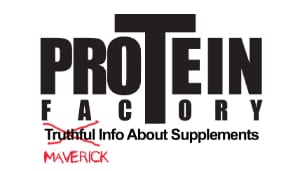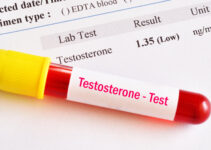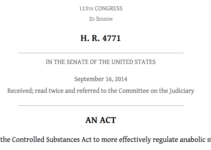Superdrol is the brand name of Methyldrostanolone. It is an anabolic steroid that was often sold as an over the counter prohormone or nutritional supplement by Anabolic Extreme and several other manufacturers. Users were reported to experience gains of as much as fifteen to thirty pounds of muscle mass in a four-week cycle. This mass increase was actual muscle fiber, not retained water, so users didn’t experience the marked losses of muscle mass during their post-cycle periods as compared to other steroids. Furthermore, this muscle mass wasn’t just useless bulk: users also reported 15% to 25% increases in their maximum lifts within the first few weeks of beginning to take Superdrol. This sort of performance gain soon attracted considerable excitement in the weightlifting community, as well as athletes involved in general strength training.
History
Historically Superdrol was never banned in the United States. It was originally synthesized in 1959 by Syntex, but never received a strong commercial push by pharmaceutical companies. One exception was its inclusion in Dimethazine, a prohormone which is converted in the body to methyldrostanolone.
Superdrol is a structurally altered form of drostanolone, with an added methyl group at the 17th carbon position to enable it to survive oral ingestion. There is another methyl group at the carbon 2 position, which increases its anabolic power. It has an anabolic rating of 400 and an androgenic rating of 20, which puts it pretty much in the middle of the road as anabolic steroids go. The most remarkable thing about it is how long it slipped under the regulatory radar.
While Superdrol was still legal in the United States, it was marketed as being more powerful than Anadrol, but many athletes who used it found that they weren’t seeing the lean muscle mass gains they were led to expect from the advertising push. However, many found it beneficial in the off-season, since it could help turn calories into lean muscle instead of fat. Bodybuilders also found that it helped preserve muscle mass when dieting to reduce subcutaneous fat for better muscle definition.
Superdrol did have many of the usual side effects of anabolic steroids, including stress on the liver and cardiovascular system, as well as the suppression of the body’s natural testosterone production. As a result, it was critical to maintain the usual regimens of on-cycle support and post-cycle therapies to avoid long-term liver damage, testicular atrophy and other negative effects.
Because Superdrol was sold over the counter as a nutritional supplement, rather than being by prescription only, there were numerous cases of athletes abusing it by staying on it far longer than the recommended cycle of four to six weeks. As a result, many of them experienced serious liver damage, since they were not giving their livers time to recover from the strain of processing Superdrol. This damage was further exacerbated if they failed to take the proper regimens of on-cycle support and post-cycle therapies, a common occurrence among those users who started taking it casually, without any medical advice or efforts at self-education in its use.
Banning of Superdrol
In 2012 the charmed life of Superdrol ended as it was put on the US controlled substance list as a Schedule III drug. Manufacture and distribution of it was now considered a heinous crime with heavy penalties including lengthy prison sentences and hefty fines.
As a result, Superdrol has pretty well disappeared from the US athletic scene. There may be a few old bottles out there from its legal days, lingering in the back shelves of pharmacies and gyms. However, the shelf life of Superdrol is only two years, which means any such remaining bottles would be long since expired and there is no way of knowing how effective they would be. In fact, it is quite possible that they have broken down to the point that using them could actually be harmful.
Another potential source for buying Superdrol is manufacturers abroad. Although Superdrol has been banned in the United States and most of the English-speaking world, it remains legal in many foreign countries. However, attempting to import it into countries in which it is banned is also illegal, and often the penalties for the customs violations of illegal importation can be as harsh as those for use of an illegal domestic product. For those who live near an international border or have the resources to travel abroad on a regular basis, there is also the possibility of exploring the gray area of pharmaceutical tourism. This too involves the problems of bringing one’s purchase back into the country without running afoul of customs, or finding a way to remain in the foreign country throughout one’s on-cycle periods.
Because Superdrol remains popular in spite of legislation against it, a black market has sprung up to respond to this demand. However, buying black-market Superdrol involves all the usual dangers of any sort of transaction outside the law. Black-market Superdrol is manufactured in laboratories of uncertain safety and quality assurance, often by the Mafia, yakuza, or other criminal organizations, and may contain dangerous adulterants. Even unadulterated black-market Superdrol may be of uncertain strength as a result of sloppy lab procedures and iffy quality control.
Furthermore, dealings with the black market put you at risk of run-ins with the law. The US DEA (Drug Enforcement Agency) and other national and international law enforcement agencies have expended considerable resources in trying to eliminate the trade in anabolic steroids and their precursors, including Superdrol. One of their major tools is the use of informants, and particularly pressuring people to turn informant in return for lighter sentences. As a result, there is a very large likelihood that the person who is talking around the gym about knowing a good source for Superdrol is in fact a snitch who will set up a supposed deal only to lead the would-be buyers straight into the arms of law enforcement.
Although Superdrol has gained a certain mystique as a “super” muscle builder, it is in fact pretty much a middle-of-the-road anabolic steroid. What made it “super” in the minds of its users was by and large the product of promotion by sharp businessmen who exploited a temporary loophole in drug prohibition to push it to the forefront of athletes’ and bodybuilders’ attention.




